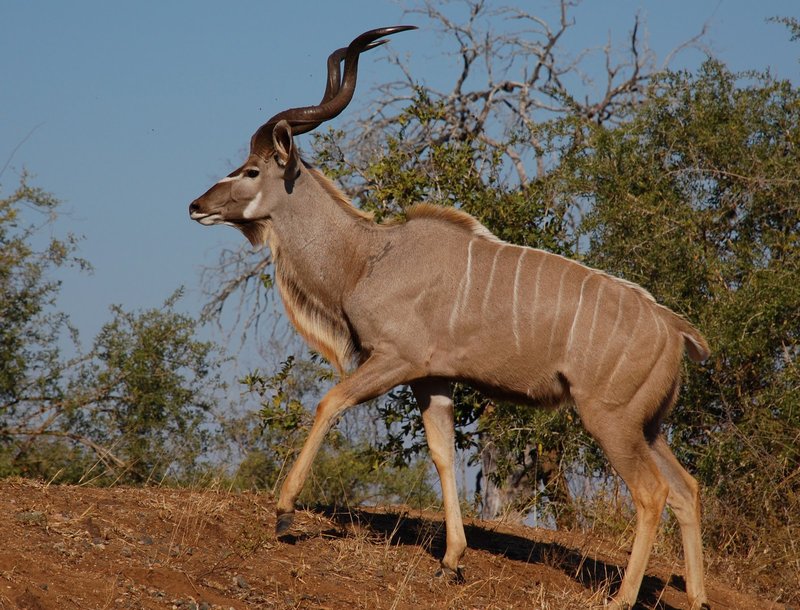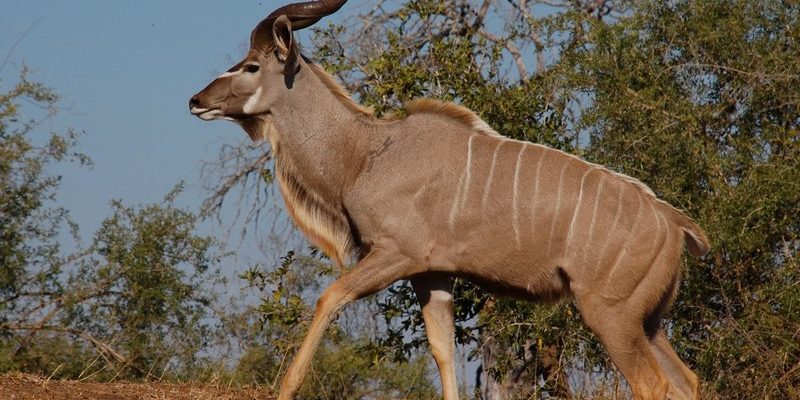
So, what exactly makes the kudu such an important player in its habitat? Let’s break it down in a way that’s easy to grasp. The kudu isn’t just a pretty face in the wild; it contributes to its surroundings in ways that help maintain a delicate balance in its ecosystem. From shaping vegetation to serving as prey for large predators, the kudu is intricately linked to the web of life in its habitat. Join me as we explore the various aspects of the kudu’s role in its ecosystem.
Kudu as Herbivores: Their Feeding Habits
Kudus primarily graze on leaves, shoots, and fruits, which makes them critical herbivores in the savanna. They have a unique ability to reach high branches thanks to their long legs and flexible necks. Imagine trying to grab the last cookie from the top shelf—kudus do it with style and ease, helping themselves to nutritious foliage that less agile animals can’t reach.
By feeding on specific plants, kudus help shape the landscape. They consume numerous leaves, promoting new growth and allowing sunlight to reach the ground. This is important for other plants and animals in the area. “Here’s the thing,” when kudus munch on certain plants, it can even help control invasive species, making way for native vegetation to thrive.
Their feeding habits don’t just benefit the plants. The leftover bits of foliage help fertilize the soil as they decompose. In turn, this creates an enriching environment where diverse plant life can flourish. So, kudus aren’t just eating; they’re playing a crucial role in nurturing their surroundings.
The Kudu and Predator-Prey Dynamics
Predators and prey are like dance partners in nature, each one relying on the other to maintain balance. Kudus find themselves in the middle of this relationship. They are prey for large carnivores like lions, leopards, and wild dogs. This creates a natural cycle that helps control the population of both kudus and their predators.
Kudus have some clever strategies for staying safe. Their excellent hearing and keen eyesight help them detect danger before it’s too late. When they sense a threat, they can leap up to 10 feet high and sprint at speeds of up to 40 miles per hour. It’s like watching a superhero in action! This agility keeps their populations in check while also providing ample food for the top predators in the ecosystem.
Here’s the interesting part: the presence of kudus can also indicate the health of the ecosystem. If their numbers dwindle, it may suggest that something’s off in the food chain or the environment. Wildlife enthusiasts often see kudus as a sign of a thriving ecosystem, making their role all the more significant.
Seed Dispersal: How Kudus Help Plants Thrive
You might not think of kudus as gardeners, but they play a significant role in seed dispersal. As they feed on fruits and leaves, they consume seeds that pass through their digestive systems. When the kudus travel, these seeds are excreted in different locations, allowing new plants to sprout in areas where they may not have grown otherwise.
Think of it this way: kudus act like little delivery trucks for plants, spreading seeds far and wide. This natural process is essential for biodiversity. It helps maintain healthy plant communities, which in turn support various animal species. Without kudus carrying out this function, certain plant species could struggle to survive and thrive.
So, the next time you spot a kudu, remember it’s not just there for the looks. It’s actively contributing to the circle of life, helping to sustain the rich biodiversity that we cherish in wildlife habitats.
The Kudu’s Habitat and Its Surroundings
Kudus thrive in diverse environments, from open savannas to dense bushlands. Their adaptability is remarkable, allowing them to navigate different types of vegetation. This flexibility means they can respond to changes in their habitat and find food or shelter when needed.
But what does all this mean for the ecosystem? By living in various environments, kudus help support the overall health of multiple habitats. They link different parts of the ecosystem together, contributing to a more resilient and diverse wildlife community.
Kudus are also excellent at managing their habitat. By trimming back overgrown areas, they help prevent wildfires, creating safer conditions for themselves and other animals. This is a classic example of how an animal can play a crucial role in maintaining a balanced environment.
Human Interaction and Conservation Efforts
Unfortunately, kudus face threats from human activities such as habitat loss and hunting. As urban areas expand and agriculture grows, the natural habitats of these magnificent creatures shrink. This is concerning because the life cycles connected to the kudus become disrupted.
Conservation efforts are crucial to protect their populations. Wildlife reserves and national parks aim to create safe havens where kudus can thrive without the pressures of human encroachment. Implementing sustainable practices that respect the balance of nature also helps ensure that kudus and their habitats remain healthy.
It’s heartwarming to see local communities involved in conservation. Educating people about the value of kudus leads to greater appreciation and efforts toward protecting them. Every small action contributes to preserving these gentle giants and their role in the ecosystem.
The Cultural Significance of Kudus
Beyond their ecological role, kudus hold a special place in various cultures. In many African societies, these animals are revered for their beauty and grace. They are often depicted in art and folklore, symbolizing strength and elegance. This cultural significance reinforces the kudu’s importance not only in nature but also in human stories.
Understanding their role helps foster a deeper connection between people and wildlife. When communities appreciate the kudus’ impact on their ecosystems, they’re more likely to engage in conservation efforts. It’s a beautiful relationship where nature and culture intertwine, reminding us of the delicate balance we must maintain.
In summary, kudus are much more than just stunning creatures roaming the savanna. They are a vital part of their ecosystem, influencing plant growth, supporting predator-prey dynamics, and shaping the landscape. As we continue to learn about these gentle giants, let’s remember to value their contributions and work towards protecting their habitats. The kudu, in all its majestic glory, truly embodies the interconnectedness of life on Earth.

